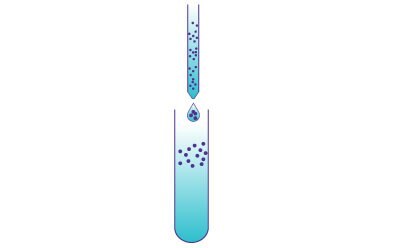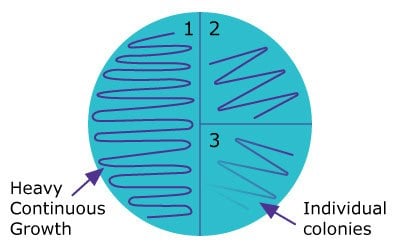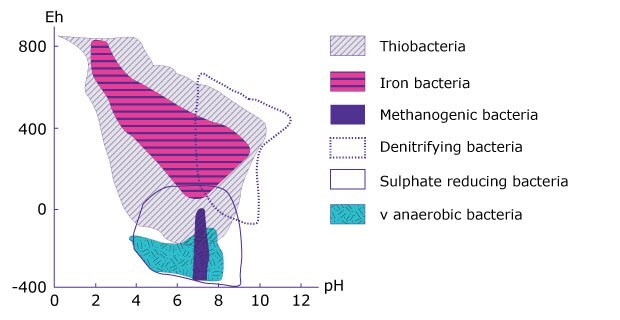Microbiology Introduction
The primary goal of all microbiologists is to achieve reproducible growth of microbial cultures, regardless of whether the microorganisms are naturally occurring or genetically engineered. To ensure reproducible growth, specific environmental conditions must be maintained, including the energy source, temperature, pH, and nutrients (refer to Microbial Growth Requirements). With this in mind, we offer a variety of products and services, such as culture collections and media comparisons, tailored to meet the needs of both general microbiologists and specialists. Visit our Microbial Culture Media and Microbial Culture Media Raw Materials webpages.
Section Overview
- Understanding Microorganisms: Types, Nutritional Needs, and Growth Conditions
- Microbial Growth Requirements
- Microbiological Culture Methods & Isolating Microorganisms from Nature
- Taxonomy and Identification of Microorganisms
- Monitoring Microbial Growth
- Preserving Bacterial Cultures
- Ensure Compliance with Our Industrial Microbiology Solutions
Understanding Microorganisms: Types, Nutritional Needs, and Growth Conditions
Microorganisms include a diverse group of organisms, ranging from simple unicellular forms such as cocci, bacilli, vibrios, and spirillae to multicellular forms like filaments and sheaths. This group encompasses blue-green algae (cyanobacteria), fungi, protozoans, and bacteria. To survive and grow, microorganisms need a source of energy and nutrients. Bacteria, as the most primitive forms of microorganisms, consist of a wide variety of simple and complex molecules and can perform a broad range of chemical transformations. Depending on their nutritional requirements and the energy sources they utilize, microorganisms are classified into different nutritional groups.”

Figure 1. Classification of microorganisms based on energy sources
The size of microorganisms varies from a fraction of a μM for viruses, which can only be seen in the electron microscope, to several cm for filamentous algae or fungi, for example:
Size of microorganisms with example
Microbial growth requirements
Microbial growth requires suitable environmental conditions, a source of energy, and nourishment. These requirements can be divided into two categories, physical factors and chemical factors.
Chemical factors
Table of the elements required for microbial growth as found in nature compared to the chemical forms supplied to microbiological media.
Chemical factors responsible for microbial growth
*Also act as buffers.
1To facilitate the solubilisation or retention of iron in solution, complexing agents such as EDTA or citrate may be added to the medium.
Physical / environmental factors
Temperature
Most microorganisms grow well at the normal temperatures favoured by man, higher plants and animals. However, certain bacteria grow at temperatures (extreme heat or cold) at which few higher organisms can survive. Depending on their preferred temperature range, bacteria are divided into three groups: Psychrophiles (cold-loving microorganisms) found mostly in the depths of the oceans, in ice and snow and in the arctic regions, have an optimum growth temperature between 0 °C and 15 °C and a maximum growth temperature of not more than 20 °C. Mesophiles (moderate-temperature-loving bacteria) found in water, soil and in higher organisms, are the most common type of microbes studied. Their optimum growth temperature ranges between 25 °C and 40 °C. The optimum temperature for many pathogenic bacteria is 37 °C, thus the mesophiles constitute most of our common spoilage and disease microbes. Thermophiles (heat-loving microbes) are capable of growth at high temperatures with an optimum above 60 °C. Some organisms grow at temperatures near the boiling point of water and even above 100 °C when under pressure. Most thermophiles cannot grow below 45 °C.
pH
Most bacteria grow best in an environment with a narrow pH range near neutrality between pH 6.5 and 7.5. Those that grow at extremes of pH are classed as acidophiles (acid-loving) or alkalinophiles (base-loving). Acidophiles grow at pH values below 4 with some bacteria still active at a pH of 1. Alkalinophilic bacteria prefer pH values of 9-10 and most cannot grow in solutions with a pH at or below neutral. Often during bacterial growth, organic acids are released into the medium, which lower its pH and so interfere with or totally inhibit further growth. Although common media ingredients such as peptones and amino acids have a small buffering effect, an external buffer is needed in most bacteriological media to neutralise the acids and maintain the correct pH. Phosphate salts are the most commonly used buffers because they buffer in the growth range of most bacteria, are non-toxic and provide a source of phosphorus, an essential nutrient element. High phosphate concentration has the disadvantage, however, that it can result in a severe nutrient limitation caused by the precipitation of insoluble metal phosphates (such as iron) in the medium.
Osmotic pressure
Microbes contain approximately 80-90% water and if placed in a solution with a higher solute concentration will lose water which causes shrinkage of the cell (plasmolysis). However, some bacteria have adapted so well to high salt concentrations that they actually require them for growth. These bacteria are called halophiles (salt-loving) and are found in salterns or in areas such as the Dead Sea.
Physical or environmental factors contributing to microbial growth

Figure 2.Types of bacteria based on their oxygen requirements
Oxygen
Microbes that use oxygen for energy-yielding purposes are called aerobes, if they require oxygen for their metabolism they are called obligate aerobes. Obligate aerobes are at a disadvantage because oxygen is poorly soluble in water and much of the environment is lacking in this necessary element. Often, aerobic bacteria have retained the ability to grow without oxygen; these are called facultative anaerobes. Those bacteria that are unable to use oxygen and in fact may be harmed by it are known as obligate anaerobes. Further groups include: the microaerophiles which are aerobic microbes that tolerate only a narrow band of oxygen concentrations usually lower than that of the atmosphere and are therefore often difficult to cultivate in the laboratory, and aerotolerant bacteria that grow in the presence of oxygen but do not require it.
Water
In contrast to higher organisms, the metabolism of microorgansims is dependent on the presence of water. The requirements of microorganisms with respect to available water differ widely. In order to compare the available water content of solids and solutions, water activity or relative humidity are useful parameters.
Carbon dioxide
In autotrophic metabolisms, microbes trap various sources of energy and reducing power, which they use to reduce CO2 to organic compounds. Sodium hydrogen carbonate is usually added to the culture media if autotrophic CO2-fixing microorganisms are to be grown, and incubation is performed in a carbon dioxide-containing atmosphere in closed vessels or, alternatively, air or carbon dioxide-enriched air is circulated through the vessel. While some chemoautotrophs are aerobic, using oxygen as the ultimate electron acceptor and deriving energy from the respiration of various inorganic electron donors, other microorganisms engage in anaerobic respiration, using an inorganic terminal electron acceptor other than oxygen. Heterotrophic (= assimilating organic carbon sources) microorganisms require carbon dioxide as well. Many bacteria living in blood, tissue or in the intestinal tract are adapted to a carbon dioxide content higher than that of normal air. These bacteria are therefore incubated in an atmosphere containing 10%(vol) carbon dioxide. Phototrophic bacteria are obligate anaerobes and use energy from light for a succession of reactions that convert carbon dioxide to triose-phosphate and other cell constituents. Even though carbon dioxide is recycled rather than assimilated, nearly all growing cells have an absolute requirement for an adequate pCO2. It is therefore important to note that the removal of carbon dioxide e.g. by KOH-absorption, inhibits the growth of nearly all bacteria.
Microbiological culture methods & isolating microorganisms from nature
Microorganisms can be isolated from their natural environments by a variety of techniques. If microbial populations are frequent, dense or large enough, they can be sampled directIy with a sterile swab or loop and inoculated into a suitable liquid medium or streaked out on an agar plate. This applies especially to medical samples in which organisms are present in large numbers and in localised areas. Environmental samples with large microbial populations, e.g. soil, may also be added directly to a suitable medium. Where microorganisms are infrequent, a pre-enrichment stop is necessary. This is achieved by filtering the samples and incubating the filters in a suitable medium. Filtration is commonly applied to liquid samples (e.g. river and sea water) and when sampling air. In-situ sampling of environmental samples involves techniques such as the buried slide or buried capillary methods, in which microscope slides or capillary tubes coated with a suitable medium are buried in the natural environment (soil or sediment) and only retrieved after a certain period of time. The slides or capillaries are then added to fresh media and the organisms sub-cultured. These methods are applied when organisms are slow growing, require special conditions; or when minimum disturbance of the environment is called for.
All samples can be sub-cultured with the use of any of the microbiological culture methods illustrated.

A.

B.

C.

D.
Figure 3. Bacterial inoculation and growth techniques. A) Poured Plate – Inoculate cooled medium from a bacterial suspension mix. B) Pour the molten medium into a sterile petri dish. C) Allow to solidify, invert, and incubate. D) Streak Plate
Taxonomy and identification of microorganisms
Taxonomy is the theory and practice of the classification of individuals into groups. There are three groups of taxonomic methods:
Numerical taxonomy
This is defined as "the grouping by numerical methods of taxonomic units into taxa on the basis of their characteristics". This involves studying all the physiological characters of bacteria using a series of biochemical and culture tests such as: the variety of organic compounds degraded, the requirement for various vitamins or co-enzymes, staining reactions, and the inbitition of growth by antibiotics. The results are coded on a computer and the relationships between individuals expressed as a dendrogram. This form of taxonomic classification makes no reference to the evolutionary relationship between the bacterial strains. Kits containing many of these tests are now commercially available facilitating the identification of several groups of bacteria.
Chemical taxonomy
Here, the grouping of individuals is carried out depending on a set of characters presumed to be inherited from a common ancestor. In the case of chemical taxonomy, bacteria are clustered according to the chemical similarity between structural components of the bacteria. The most commonly used materials are proteins, which are molecules that are well preserved during evolution. To establish common ancestry, chemotaxonomists commonly analyse the primary structure of enzymes, peptidogylcan, the cytoplasmic membrane and its fatty acid composition, the outer membrane and the end products of metabolism.
Molecular taxonomy
This is the comparison of the genetic sequences of chromosomal DNA or ribosomal RNA to establish similarity patterns and the phylogenetic evolution of a group. Although the DNA content in purine (G, guanine; A, adenine) and pyrimidine (C, cytosine; T, thymine) bases vary from one individual to another, they remain constant within a given species. The G+C content can therefore be used to establish taxonomic relationships.
Mole % (G + C) content = (G + C) x 100/(A + T + G + C)
Similarities between the sequences of 16S or 23S ribosomal RNA are also compared in order to study the phylogeny of a bacterial group.
Antimicrobial sensitivity testing
The antimicrobial activity of a compound is usually determined by measuring the lowest concentration of the compound which is needed to inhibit growth of the test microorganism (MlC-minimum inhibitory concentration). The tests rely on the diffusion of the antibiotic through the microbial medium to inhibit the growth of the susceptible organism growing in it or on it. The zones of inhibition are taken to be representative of the susceptibility of the microbe. Antibiotic sensitivity has been used for many years as a characteristic method for classification and identification.
Anaerobic growth
The cultivation of strict anaerobic bacteria poses a special problem because these bacteria may be killed by exposure to air. Dissolved oxygen in the medium forms toxic free radicals and hydrogen peroxide in the presence of metabolic electrons. Obligate anaerobes are incapable of detoxifying these active forms of oxygen. To grow non stringent anaerobes on solid media, anaerobic jars are used together with gas generating "Gas-Paks", which release both CO2 and H2. The hydrogen reacts with oxygen in the presence of a palladium catalyst to produce water, thus removing oxygen from the jar. Completely anaerobic chambers equipped with air locks and filled with inert gases used for the cultivation of strict (obligate) anaerobes are commercially available.
Redox potential (O/R potential)
This is the proportion of oxidized to reduced molecules in a medium: when oxygen dissolves in a medium, for instance, the organic compounds present become more oxidized and the medium exhibits a positive redox potential. As microbial growth consumes the oxygen, the medium moves towards a more negative redox potential. Strict anaerobes require the medium to be kept at a very low (negative) potential during growth. To achieve this, reducing agents are added to the media prior to autoclaving. Commonly used reducing agents are sodium thioglycolate (HS-CH2COONa) or sodium dithionite, which easily donate protons to other compounds. The relationship between redox potential, pH and microbial growth is illustrated below.

Figure 4.Distribution graphs of bacterial groups based on pH and Eh levels

Figure 5.Bacterial dilution and colony counting method
Serial Dilutions
The inoculum is diluted out in a series of dilution tubes which are plated out. The number of colonies on the plate are counted and corrected for the dilution to calculate the number of organisms in the original inoculum.
Most Probable Number Method
A statistical method estimates the most probable number of bacteria present in an inoculum which has been used to make a dilution series. Several series are made with different initial volumes of inoculum; the results are recorded as a series of positives, i.e. growth in the tube, which can then be calculated to give an MPN. The result is the probable number of microorganisms that would be expected to yield this result.
Direct Microscope Observation
Specially constructed microscope slides are used which have a shallow well of known volume and a grid etched into the glass. The well is filled with the bacterial suspension and the average number of bacteria in each of the grid squares is determined and then multiplied by a factor to give the counts per millilitre. Selective staining (employing fluorescent dyes) is used to differentiate bacteria from non-living material in environmental samples. Electronic cell counters are also available which automatically count the number of cells in a measured volume of liquid.
Turbidity (Optical Density)
The turbidity of a liquid medium increases as bacteria multiply and can be measured on a spectrophotometer. The amount of light reaching the detector is inversely proportional to the number of bacteria under standardized conditions. The absorbency of the sample (optical density) is dependent on the number of cells, their size and shape, and is used to plot bacterial growth. If absorbency readings are matched with a direct count of the same culture, its protein content or dry mass, the correlation can be used in a future estimate of bacterial numbers or biomass based directly on turbidity measurements.
Metabolic Activity
Another indirect way to estimate bacterial numbers is to use the metabolic activity of the population. The amount of a metabolic product is measured and assumed to be proportional to the number of bacteria present. Examples of metabolic products include CO2 and organic acids. Oxygen uptake can also be measured with a reduction test, for example the use of the methylene blue dye, which changes colour from blue in the presence of oxygen to colourless in its absence.
Preserving bacterial cultures
Refrigeration
Can be used for short-term storage. Cultures streaked on agar slants or stab cultures may be viable over several months when stored at 4 °C . Plates have to be sealed to prevent their tendency to dry out. To preserve cultures for longer periods of time, two methods are commonly employed:
Deep Freezing
A pure culture of bacteria is suspended in a liquid and quick-frozen (often with liquid nitrogen) at temperatures between -50 °C and -95 °C. Sensitive microorganisms require the presence of glycerol (end concentration 15-20 %), which acts as an "antifreeze", or extra protein (skimmed milk powder) to protect them. Cultures can be thawed and used up to several years later.
Lyophilization
A suspension of bacteria is quickly frozen and the water removed by means of a high vacuum. The microbes survive in these powder like residue for several years and can be revived at any time by rehydration of the culture in a nutrient medium. Bacterial strains ordered from strain collections are usually delivered in this form.
Ensure Compliance with Our Industrial Microbiology Solutions
From microbial filtration units and air samplers for the pharmaceutical and cosmetic industries to culture media and pathogen testing products for municipal water, beverage, and food industries, we provide high-quality products to meet your application needs in environmental monitoring, microbial food testing, beverage spoilage testing, pharmaceutical microbiology, and sterility testing. Explore our industrial microbiology solutions and find all your laboratory requirements in one place.
To continue reading please sign in or create an account.
Don't Have An Account?